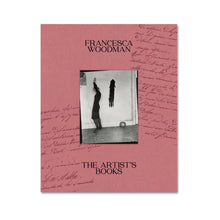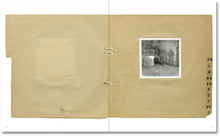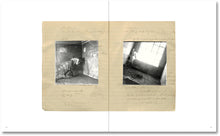Available to preorder - this title is due to release in April / May 2023.
Embossed hardcover with Japanese paper
24.5 x 30 cm, 416 pages
24.5 x 30 cm, 416 pages
MACK 2023
*
Francesca Woodman made her first mature photographs at the age of thirteen and went on to create a body of work that has been critically acclaimed for its singularity of style and innovative approach to photography. Despite her lifetime accomplishments – which included solo and group exhibitions and the publication of one of her books – and her work being celebrated widely in the years since her untimely death in 1981, very little has been published about her remarkable series of artist’s books until now.
Francesca Woodman: The Artist’s Books collects for the first time every page of all eight of Francesca Woodman’s unique artist’s books in one comprehensive volume, including two newly discovered books which have never been seen before, alongside better-known titles such as Some Disordered Interior Geometries. The basis of these works is in tattered nineteenth- and early-twentieth-century journals and notebooks that Woodman collected from bookshops and flea markets in Rome in the late 1970s. She later transformed these found volumes, attaching her prints, transparencies, and written annotations to their evocative pages. These books demonstrate a sophisticated relationship to narrative and sequence and offer a new understanding of the scope of Woodman’s engagement with the book form.
Francesca Woodman: The Artist’s Books collects for the first time every page of all eight of Francesca Woodman’s unique artist’s books in one comprehensive volume, including two newly discovered books which have never been seen before, alongside better-known titles such as Some Disordered Interior Geometries. The basis of these works is in tattered nineteenth- and early-twentieth-century journals and notebooks that Woodman collected from bookshops and flea markets in Rome in the late 1970s. She later transformed these found volumes, attaching her prints, transparencies, and written annotations to their evocative pages. These books demonstrate a sophisticated relationship to narrative and sequence and offer a new understanding of the scope of Woodman’s engagement with the book form.














































